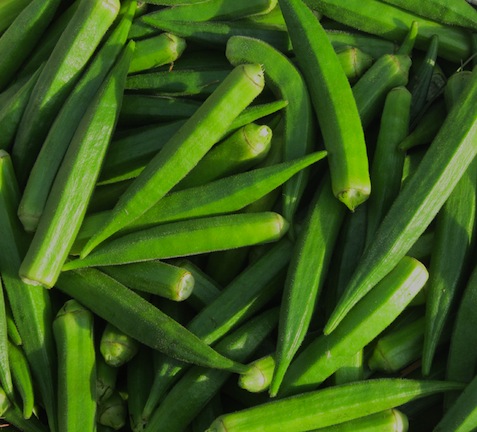 |
||
| Organic Farming :: Organic Farming Practices | ||
CLIMATE AND VARIETIES
Intercrops and crop rotation Okra can be grown in different cropping systems. The crop responds to high doses of fertilizers and indicates better utilization of nutrients under intercropping conditions. Good returns can be obtained when okra is grown along with French beans or radish. The following cropping pattern – okra-cowpea-maize, maize-okra- radish and okra-okra-radish – reduces bacterial wilt in tomato and brinjal grown as succeeding crops. With sugarcane, it is reported to increase the yield of cane as per a trial carried out in Nepal. Growing season In south Indian conditions, the crop can be grown throughout the year since frost and severe winters are absent. In north India, two crops are usually raised in a year. The summer crop is sown during February–March and harvested between April–June. The rainy season crop is sown during June–July with the onset of rains and harvested between August–October. For the summer crop, early maturing five ribbed cultivars with smooth pods are preferred and for the rainy season, late maturing five to eight ribbed cultivars with smooth or hairy pods are grown. A few cultivars are suited for both the seasons. Soil The crop is adapted to a wide range of soils from sandy loam to clayey loam. But due to its well-developed tap root system relatively light, well drained, loose, friable and well-manured loamy soils are preferred. A pH between 6–6.8 is ideal. Before sowing, enrichment with organic manure is needed for all soil types. Okra can also be grown in mild salt affected soils. Crop duration The total crop duration is between 90 and 120 days. VARIETIES Pusa Sawani, developed as an open pollinated variety, prevailed across the country for more than two decades. With the breakdown of its tolerance to yellow vein mosaic virus, around fifteen to twenty varieties have been developed by different organizations and released for cultivation. The popular okra varieties today are Arka Anamika, Pusa Sawani, Pharbhani Kranti, Janardhan, VRO-5, Pusa Mukhmali, Varsha Uphar, VRO-6, Pusa A-4, and Utakal Gaurav, etc. Besides these, local varieties are still being grown, particularly by organic farmers. Some of the popular local varieties of Tamil Nadu are Bangalore local, Kulemagali Vendai and Nattu vendai (JRDP). Source : Centre for Indian Knowledge Systems, Chennai Updated on : Dec 2014 |
||
© 2009-16 TNAU. All Rights Reserved. |
